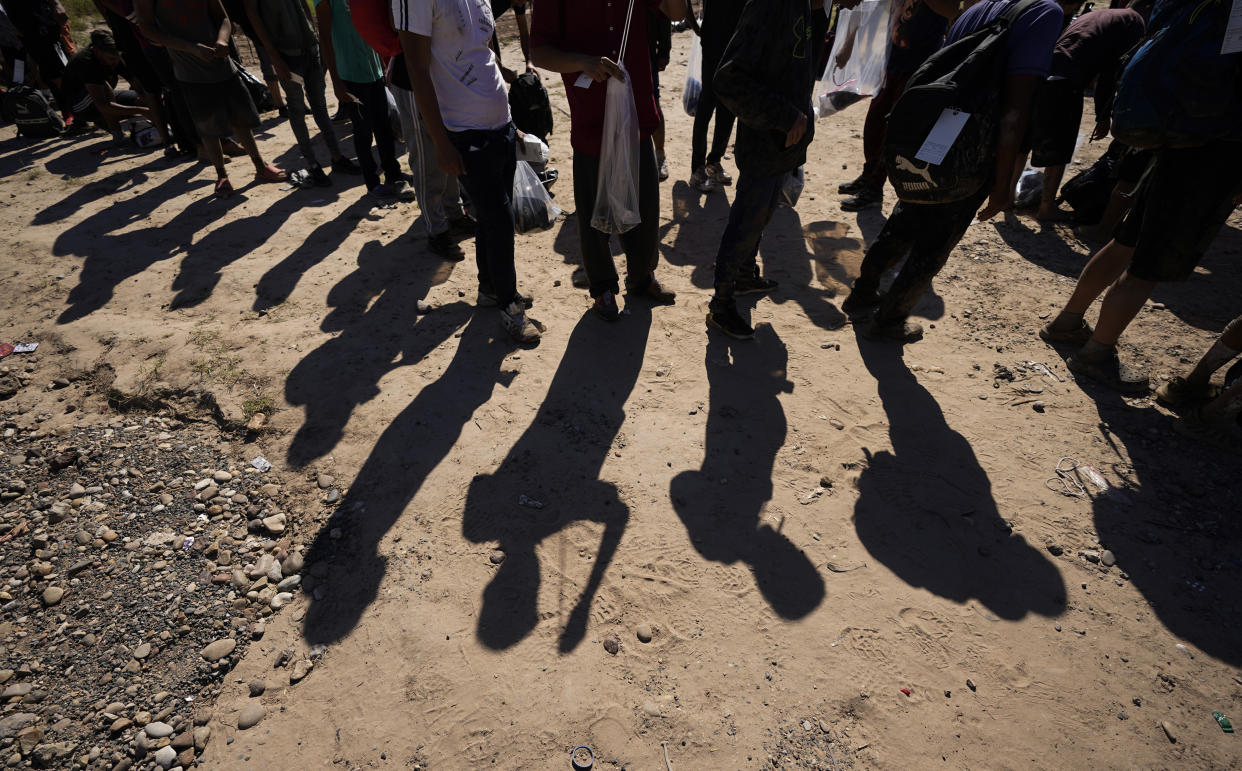One key reason inflation is cooling: Immigrant workers
There’s one hot-button topic that could hold the key to where inflation goes: immigration.
It’s already done a great deal in bringing down consumer price growth to where it is now, experts say, even though the most recent data showed that inflation increased more than expected in December. Investors would be wise to track the flow of immigrants as they assess the future direction of interest rates and the US economy.
Not only did the foreign-born population in the US finally exceed its prepandemic trend in December, but also the labor force participation of that group has been well above where it was before 2020 over the last 15 months.
The arrival of these workers, as a result, has eased the labor shortages during the pandemic and tempered wage growth that fed into that runaway inflation.
The recent trend, though, won’t necessarily continue. It depends on both global and domestic policies, with immigration potentially a key issue in an election year.
"Though it's a political hot potato, there's no question about it," Samantha LaDuc, founder of LaDuc Capital LLC, told Yahoo Finance. "Immigration absolutely has helped keep inflation from getting out of control and has brought it down."
The reverse is often true, too. Limited immigration can drive up prices.
Take the pandemic, for example, when immigration was stunted. In 2020, then-President Donald Trump suspended both immigrant and nonimmigrant visas and later extended those suspensions until President Joe Biden took office. At the same time, China closed its borders for travel in and out of the country in response to the pandemic.
What happened? The employed population of foreign-born workers and their share of the total labor force dropped and didn’t recover to February 2020 prepandemic levels until the last months of 2021.
Overall, from March 2020 to December 2021, the US economy missed out on about 1 million workers, many of them foreign-born, according to Courtney Shupert, an economist at MacroPolicy Perspectives. That forced companies to jockey for a diminished pool of workers by increasing wages, especially on the lower end.
"So when you have an environment where wage growth is picking up from, let's say 3% per year to … 8%, then that suddenly becomes a massive strain on your bottom line and you have a few alternatives to limit that," Gregory Daco, chief economist at EY-Parthenon, told Yahoo Finance.
Some companies chose to pass on those costs to consumers by raising prices, Daco added, which helped set the table for higher inflation to come.

There's a lag, of course, between the drop in immigrant workers and its eventual impact on inflation, which hit its most recent peak in June 2022 before slowly abating. Wage growth followed a similar path.
By that time, the influx of immigrant workers had already picked up. After taking office in 2021, Biden implemented more than 400 administrative actions to streamline the visa process and — more importantly, according to Shupert — he staffed up the government offices needed to process visa applications.
"That was something that we didn't have," Shupert said.
Starting in 2022, work-eligible visa issuances began to outpace the monthly averages from 2017 to 2019, according to data provided by MacroPolicy Perspectives, and have remained above-trend since.
Another key factor was China fully reopening its borders in January 2023. Visa data from last year shows an increase of immigrants from China, according to Shupert.
By December 2023, the employment level of foreign-born workers was nearly 10% higher than before the pandemic, with those workers making up slightly more than 20% of the labor force, the highest level dating back to 2007, according to data provided by MacroPolicy Perspectives. The economy also recouped 60% of that 1 million worker shortfall, Shupert said.
"Having more people in the workforce has really helped prevent us from entering a wage price spiral," Shupert said. "There's this theory that inflation increases and then wages increase and then inflation increases again … and the two build off each other. We haven't entered that and I do think the resilience of having more immigrants as part of our workforce has helped."
To be sure, the impact of immigration on wages is complicated, according to Dean Baker, a senior economist at the Center for Economic and Policy Research. He said the influx of foreign-born workers put downward pressure on wages in 2022-23, but that it doesn't always work that way.
"Research is mixed," he wrote to Yahoo Finance.

Going forward, how immigration continues to affect inflation depends on a host of factors. For instance, immigration does not necessarily lead to more workers.
While the labor force participation of immigrants has been high — accounting for about half of the increase in that overall rate in the last year, per Shupert — that could come down if more non-working immigrants such as elderly relatives, stay-at-home mothers, and students come to the US.
"That would be kind of a downside risk," Daco said, while noting he expects the participation rate to remain elevated based on recent trends.
What other countries do can also drive future immigration trends, like China did in the pandemic. Another example that Daco brought up was if Canada loosened its immigration policy for certain types of workers — "which it often does," Daco said, to manage labor supply shortfalls — then that would drain some immigration away from the US.
Then there is domestic policy on immigration. Far right Republicans have demanded border security to be part of any government funding talks, while Trump — the frontrunner for the Republican nomination for presidency — has revived anti-immigration rhetoric that was a centerpiece of his 2016 campaign.
"If Trump comes back into power, we already know the playbook. He's already done this. We know that immigration will go down again and that will be inflationary," LaDuc said.
"I don't know what the policies will be around immigration, but they will absolutely have a big part in the direction of inflation."
Janna Herron is a Senior Columnist at Yahoo Finance. Follow her on Twitter @JannaHerron.
